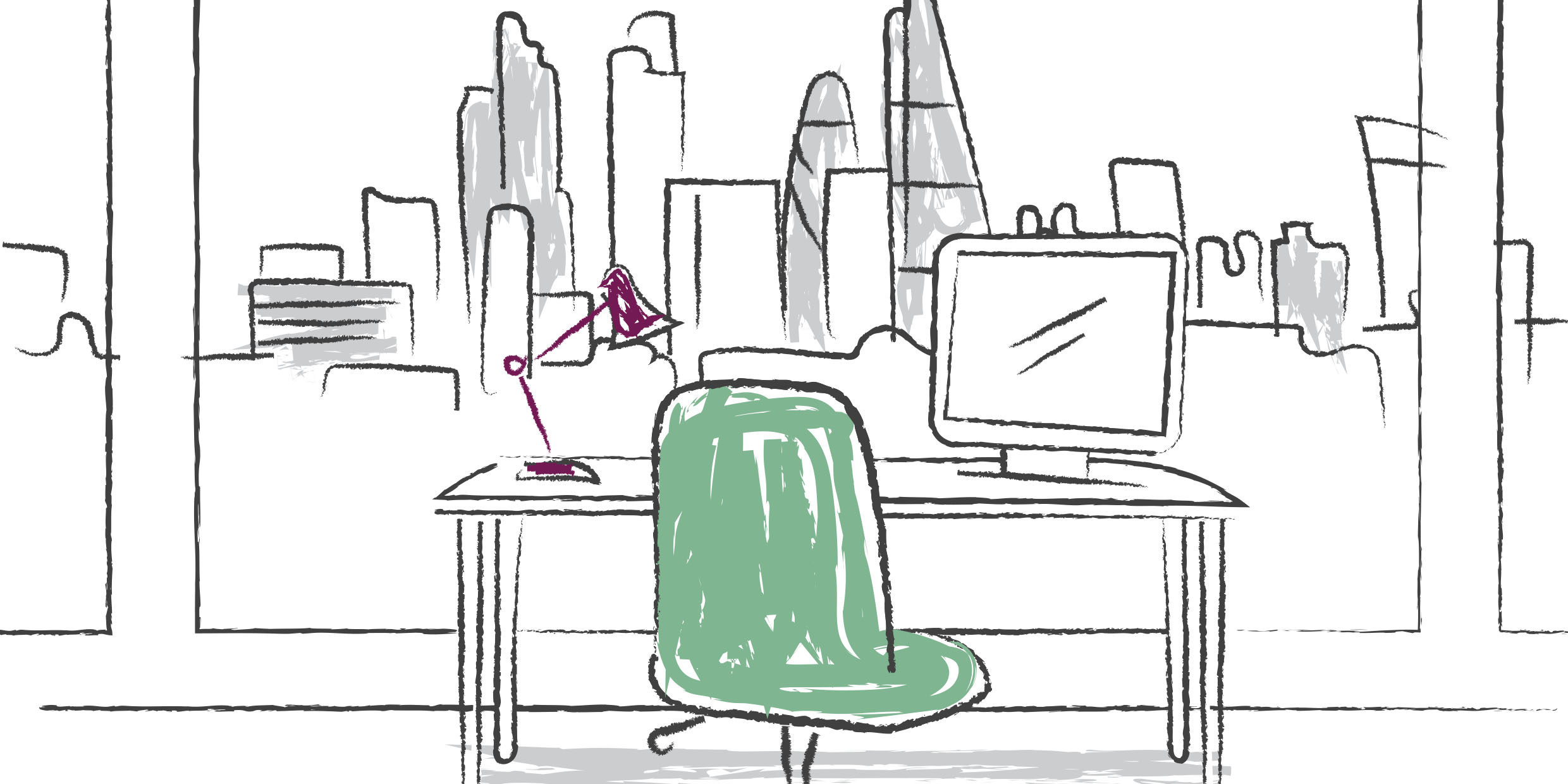There’s no point pretending that everything is going back to normal. It simply isn’t. Whether this lockdown is sustained or not, a paradigm shift has taken place in the minds of those employees still with jobs, and they’re all wondering the same thing: why did they ever need to go to the office in the first place?

In the past month, we’ve all asked ourselves: why did we collect together five days of the week in a place nobody particularly likes, by means of travel everybody thoroughly dislikes, when almost everything we required was ably catered for in the comfort of our own homes?
The balancing act
We jumped in cars, hopped on buses, rushed for trains, to move sometimes no more than a few miles with thousands of other commuters, just to be in the same physical space as our colleagues. Many of our meetings were a waste of time: inefficient, lacking agendas and descending into socials at best; at worst, opportunities for bullying, self-aggrandising, and Machiavellian office politics. Much of our time may have been taken up by chats; our concentration deviated by noise or by emails, leaving us to work on the important stuff on trains and in the evening, at home on the laptop…the irony!
Whether you’re a worker or leader, you may have felt the push and pull between office life and personal. For some of us that meant commuting for hours, missing bedtime stories or drinks with friends – all to meet an unnecessary concept of ‘working together’. Why do we do it? For what purpose? What toll on our environment, ourselves, and our families?
Why do we use offices?
The reasons for bringing people under one roof made perfect sense when the factory contained the plant required to make things. But now each one of us has technology in our pockets more powerful than the computing systems that put men on the moon. Let us not forget that before mass industrialisation, cottage industries relied on people spinning, weaving and producing in their own homes. Piece work required Piece Hall. For Victorian institutions, central control was the order of the day. It was how the Empire was ruled. A vast web of factories kept the Empire’s cogs turning, kept the great un-washed employed and subdued, and kept large armies populated with cannon fodder. Institutions with offices ensured adroit administration and schools to perpetuate the system. Control was the centre and it worked.

My suspicion is that for many companies, bringing every employee into one space is largely about keeping an eye on what they are doing, and nothing to do with togetherness and building culture. Of course, this is hugely cynical and I know lots of organisations where this isn’t the case. But it does make you think if dragging people into an office is the best means one has of ensuring they do a great job in 2020, are we moving forward as leaders and managers?
If you really need to keep an eye on what people are doing, perhaps you need to consider your leadership, your managers and the systems and processes that you are using to enable and to assess performance. In a digital world, leadership and management need to be different.
New ways to think about working
So before I throw the baby out with the bathwater, here are some thoughts that might enable you to think bravely about the next phase of working:
- At the risk of further denting my pension (commercial property is inevitably part of the mix for most pensions)… do you need a head office if the majority of your workforce can clearly work from home the majority of the time? Unthinkable eight weeks ago but today, I think a serious consideration for many businesses, not only from a rental cost point of view but also employee happiness.
- What kind of environment(s)/workplaces/home-working spaces will enable your company to thrive? Perhaps your business has required people to be together in one place? If so, the status quo reigns. Or does it? Even if it is right for the company, you will need to think about your employees’ changing attitudes if you want to remain competitive.
- Microenvironments – in nature there are microclimates, those north-facing areas of the garden where the moss thrives, or the sunny spots where the fruit grows fat. Just as in nature so in the office: can you create the right environment for different functions or behavioural types? Should you have a place for the thinkers to retreat to or the noisy bustle areas where the extroverts can gather?
- Timing – is it necessary to have all meetings at 0800 hours or 0900 hours knowing this makes life impossible for parents?
- How will you address the innate social need in people? Togetherness should not be underrated and even if you adopt a flexible working environment, people will need times and places to come together. How will you accommodate this?
Considerations for workplace changes
- Think employee first – When we develop a proposition we typically start with the customer. Many leaders advocate placing the employee first. If the employee thrives, chances are the customer will too.
- Think demographically – the office is a key part of a 20-something’s social life. Cut this off and you cut them off. Similarly, how do you meet the needs of the parents?
- Think functionally – our experience and research suggest that functions can manifest behavioural profiles. As such, think about what environment is best for certain types. Finance – maybe more work from home is good. Creative – maybe we need a balance of together, at home and ‘something different’. Trading – maybe more time together in multidisciplinary pods and the odd day at home.
- Air quality – how will you manage the fact that your entire workforce is now extremely knowledgeable about airborne diseases?
- Transport – how do you balance the need to have your employees under one roof with their collective abhorrence of getting on a tube train? Being inflexible will lead to an exodus of talent.
- Training – is it possible to train graduates and get people moving up the ladder if they are working from home, if not you will lose them.
- Social distancing – will you need to rotate teams? How will you do that? How will you discipline those that flaunt the rules? And what of physically remodelling the workspace so that desks are sufficiently spaced? Hell of a lot easier if half of your office is comfortably working from home.
How has the lockdown changed your perception of working? Let me know what differences you’ve noticed, or what habits still remain the same at [email protected]
















